Having the correct semi-truck or 18-wheeler tire size is vital in the operation of any size fleet of trucks. Properly operating tires impact the bottom line regarding the amount of time the trucks can be on the road and the safety of your operators and others on the road. Having the wrong semi-truck tire size can mean that general wear and tear happens faster. The size matters when understanding how the placement of each tire. More maintenance or less time on the road means your payload is not being delivered.
Over the last few years, the most common truck tire sizes include but are not limited to 295/75R22.5, 275/70R22.5, and 225/70R19.5. While these cover average truck tire sizes and the list is good information to have, it is not ultimately helpful if you don’t understand what these numbers mean to you and your truck/s.
If we take that first size, 295/75R22.5 and explain how semi-truck tires are sized, those numbers break down into several informative categories.
Tire Width - The first number in the series denotes the tire width. Semi-truck tire width can be displayed in terms of inches or millimeters. In this case, a 295-inch wide tire would be massive, so a quick assumption can be made that this is a millimeter marking. Having the correct semi tire width is vital as it is literally where the rubber meets the road.
Aspect Ratio - The second notation (75) after the slash mark is the aspect ratio. It represents the percentage of the length of height to width. This number is an important sizing calculation in tire fitting, and along with rim diameter will help you determine your best tire and wheel combinations.
Tire Construction Type - In this example, the letter R stands for radial (this notates that the steel belts inside are running 90-degrees from the direction the tire is facing). If you see a dash, then the tire is bias-ply (this notates that the nylon belts running anywhere from 30 to 45-degrees from the direction the tire is facing).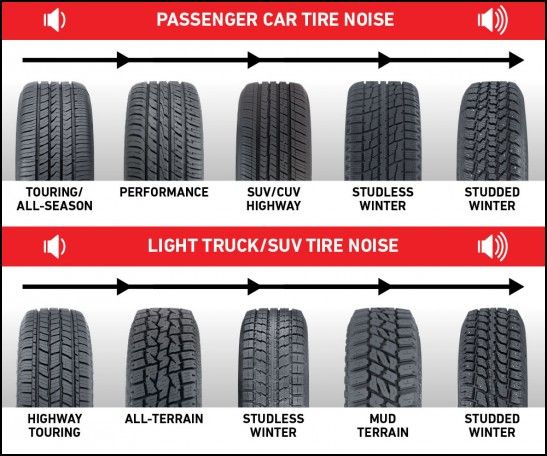 Much less common are B for bias belt and D for diagonal.
Much less common are B for bias belt and D for diagonal.
Rim Diameter - The following number, in this case, 22.5, is the diameter. This does not apply to the diameter of the whole tire, but rather the semi-truck wheel diameter (the hole in the center of the tire). You would need a 22.5-inch wheel to fit this tire.
When reading the sidewall, you will encounter two additional numbers.
Load index - This number will indicate how much weight or load carrying capacity a single tire can hold. For example, 89 = 1,279 pounds, while 88 = 1,235 pounds.
Speed rating - You will see a speed rating letter at the end of the string. This indicates how fast the tire can go under its maximum load. A tire can go faster than this number at a lower load, but typically the tires can withstand a higher speed than the speed limits you will encounter.
No matter the size of your fleet or the needs that your trucks meet, we have the right tires for you.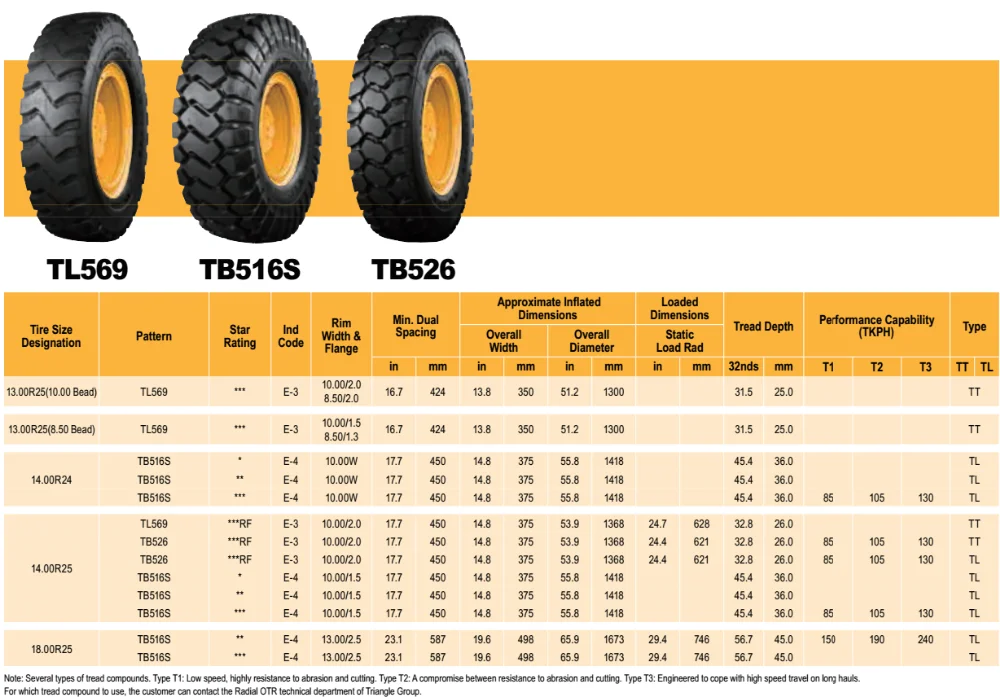 Whether you are looking for steer tires, drive tires, trailer tires or all position tires, we can outfit every wheel position of your commercial truck. Whether you’re looking for a top-tier fuel-efficient tire or a more economical option, we carry a wide variety of brands and semi-truck tire sizes, and we can get you and your truck back on the road quickly.
Whether you are looking for steer tires, drive tires, trailer tires or all position tires, we can outfit every wheel position of your commercial truck. Whether you’re looking for a top-tier fuel-efficient tire or a more economical option, we carry a wide variety of brands and semi-truck tire sizes, and we can get you and your truck back on the road quickly.
FIND A GCR DEALER NEAR YOU
Tire size can be confusing. Some numbers on the sidewall are listed in millimeters while others are inches. Plus, the right size for your car, truck, or trailer can differ depending on where and how you drive.
You can see your original equipment tire size in your owner’s manual or on the placard generally located on the driver’s side door jam. This is the sizing recommended by the vehicle manufacturer.
If you’re interested in switching out your tires for a different look or performance, a good place to start is the numbers and other indicators on your existing tires’ sidewall. Next, have a tire professional help you determine a tire size range that will fit your vehicle and driving needs.
Next, have a tire professional help you determine a tire size range that will fit your vehicle and driving needs.
Here’s what those numbers and indicators on the sidewall indicate and how to understand them:
A: TIRE TYPE The first letter in the code tells you what class of tire it is.
P stands for passenger vehicle tire. P-class tires include cars, SUVs, crossovers, minivans and smaller pickup trucks.
LT means light truck tire, designed for vehicles that are capable of carrying heavy loads, towing trailers, or for those looking for an extra heavy duty option. These are often equipped on three-quarter or 1 ton trucks and SUVs.
ST stands for Special Trailer. These tire sizes are meant for trailers, including fifth wheels and other travel trailers, as well as boat and utility trailers.
If there’s no letter before the first number, you have a metric tire most commonly referred to as European size.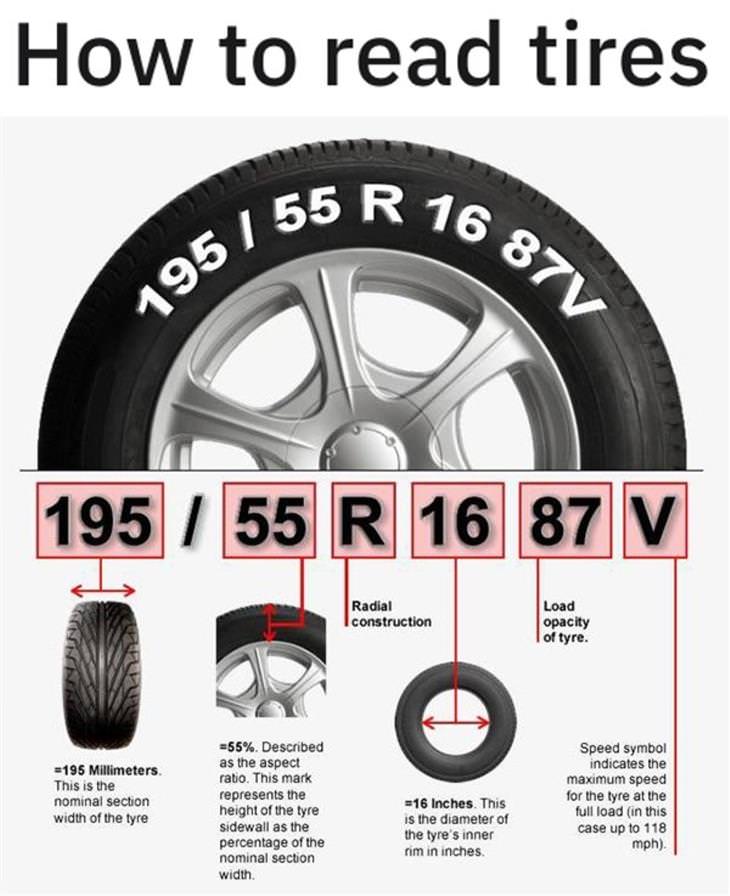 It’s also measured in millimeters but may have a different load capacity than a P or LT tire.
It’s also measured in millimeters but may have a different load capacity than a P or LT tire.
B: TIRE WIDTH The three-digit number following the letter is the tire’s width (from side to side, looking at the tire head on) in millimeters. This may also be referred to as the section width.
C: ASPECT RATIO The forward slash separates the tire width number from the two-digit aspect ratio. The bigger the aspect ratio, the higher/taller the tire’s sidewall, or “profile” as it’s sometimes called.
The aspect ratio is indicated on the tire sidewall as a percentage. It’s the height of the sidewall measured from wheel rim to top of the tread, expressed as a percentage of tire width.
In this example, the aspect ratio is 65, meaning the sidewall is 65 percent as high as the tire is wide. To get the sidewall height, take the tire width of 215 mm and convert it to inches (8.46). Then multiply this by 65% (.65). This gives you an answer of 5.5, the sidewall height in inches.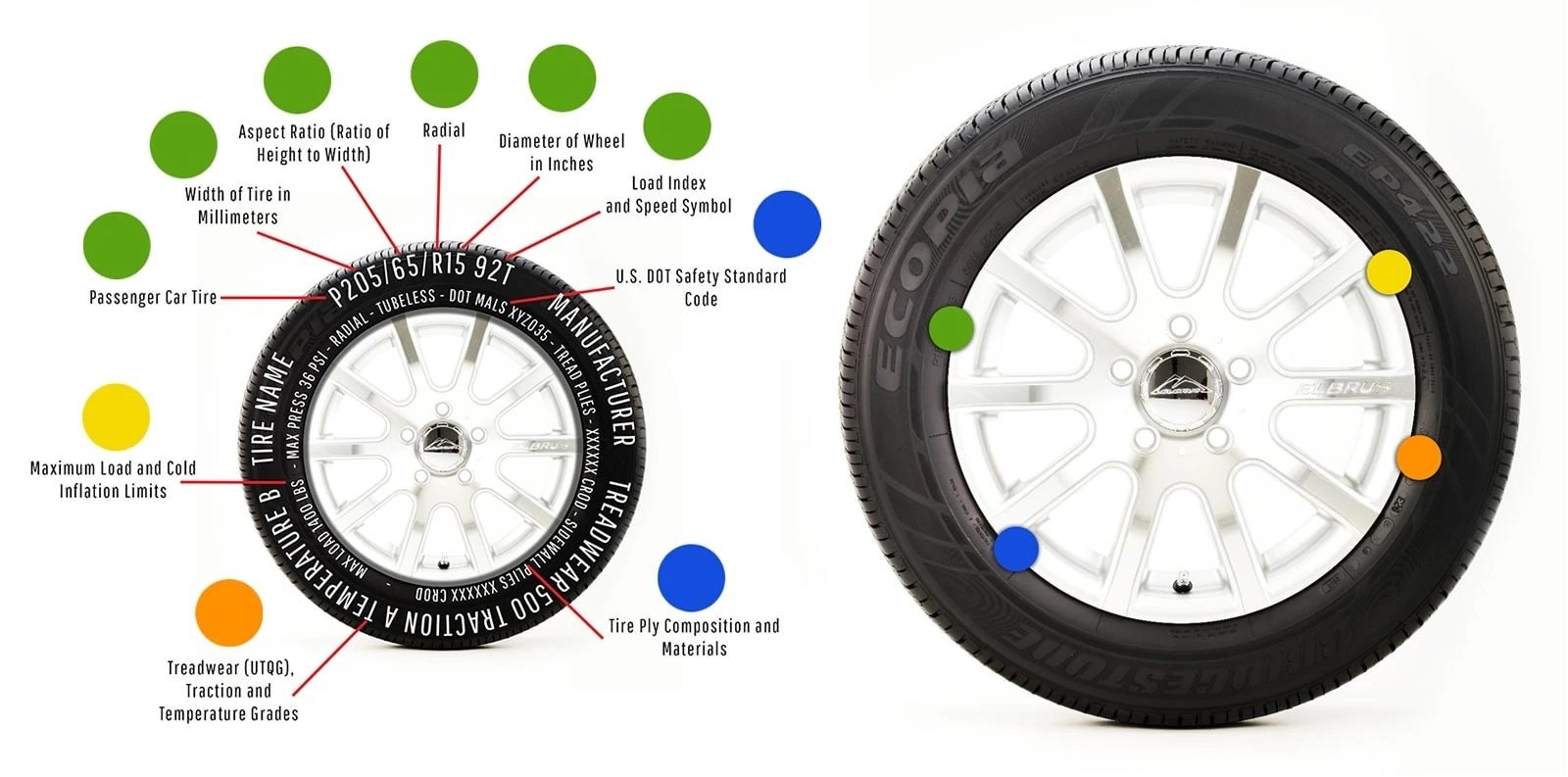
D: CONSTRUCTION TYPE This single letter tells you about the internal construction of the tire.
R is for radial tires, the industry standard for most tires today. They have better road grip, lower rolling resistance for better gas mileage, ride comfort and durability than previous generations of tires. In a radial tire, the plies — layers of strong cords made of a blend of polyester, steel and fabric and coated with rubber — are laid perpendicular to the direction of travel.
D is for tires built with diagonal (crisscrossed) plies, called bias-constructed tires. They are also called conventional, x-ply, or cross-ply tires. Some motorcycle and trailer tires still use this internal construction.
Some run-flat tires are identified with an F followed by the type of internal construction.
E: WHEEL DIAMETER This two-digit number specifies wheel diameter in inches. It’s the distance between the two bead seat areas (where a tire gets tightly sealed onto the wheel).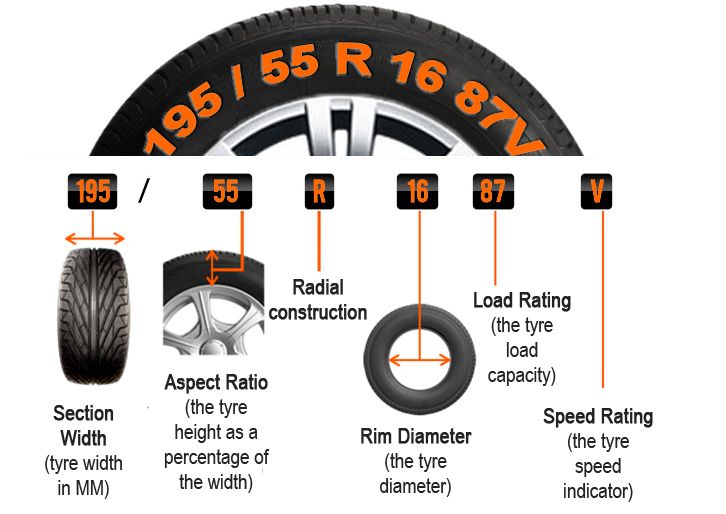
F: LOAD INDEX The two-digit or three-digit number that follows the gap specifies tire load index. The load index symbol indicates how much weight a tire can support, based on the following standard chart. In our example, the load index is 89, which indicates the tire has a load capacity of 1,279 pounds, when inflated to the tire’s maximum air pressure rating.
G: SPEED RATING The last letter is the tire speed rating. This indicates the top speed it’s safe to travel at for a sustained amount of time. A tire with a higher speed rating can handle heat better and provide more control at faster speeds. The maximum operating speed of a vehicle is no more than the lowest speed rating of all tires mounted on the vehicle. (Of course, you should always abide by speed limits for safer driving.) Speed rating is usually, but not always, a single letter (see the chart).
Below you will find several charts that will help you understand tire sizing numbers, including a load index chart and speed rating chart.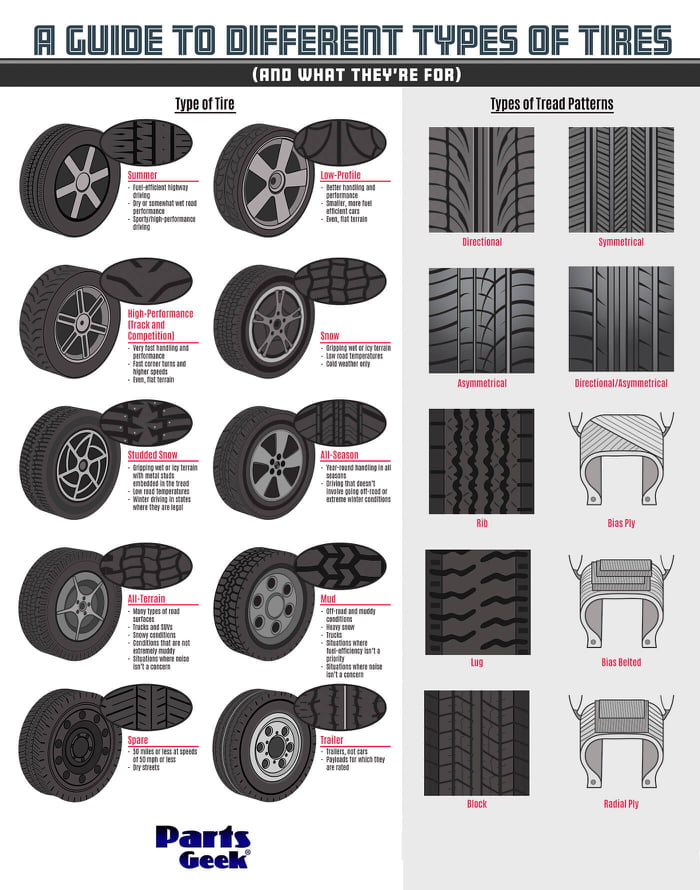
A tire size calculator is a quick way to see whether the tire size you’re considering will likely fit your car, SUV, sports car, light truck or crossover.
But remember that is only an estimate. It’s important to stay within the sizing tolerances of your vehicle. Tires that are the wrong size could cause some pull in the steering wheel, rub against the suspension or body of your vehicle, reduce clearance on hills, or result in a stiffer or noisier ride.
If you’re considering mounting a different tire size on your vehicle, check with a tire expert. Find out whether the tires and wheels you have your eye on are the right fit for your vehicle’s suspension, gearing, and bodywork. And ask how any differences in revolutions per mile, tire speed, load index, and speed rating will affect your ride quality and vehicle performance.
See how new tires and rims will look on your car or truck using our Virtual Wheels simulator, available at any Les Schwab.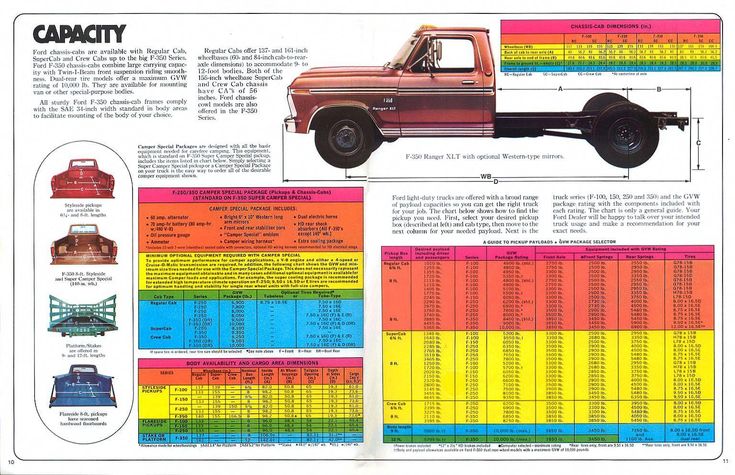
Find Your Store
Tire sizes are represented by outer diameter, section width and static radius for each truck and passenger car tire designation.
Tire sizes in accordance with GOST R 52899-2007 “Pneumatic tires for cargo motor vehicles and trailers. Specifications".
Table 1. Light truck tires.
| Tire designation | Main dimensions, mm | Static radius ±1.0% (reference) | |
| OD ±1.0% | Profile width, max | ||
| 185/80R15C | 674 | 188 | 310 |
| 215/80R16C | 755 | 218 | 355 |
| 225/75R16C | 744 | 228 | 338 |
5. 90-13C 90-13C | 620 | 154 | 292 |
| 6.40-13C | 645 | 172 | 303 |
| 215/90-15C | 777 | 218 | 364 |
| 6.50-16C | 760 | 180 | 360 |
| 175/80-16C | 692 | 178 | 326 |
Table 2. Tires for trucks.
| Tire | Rim designation | Main dimensions, mm | Static radius ±1.5% (reference) | ||
| recommended | tolerable | OD ±1.5% | Profile width, max | ||
| Diagonal | |||||
7. 50-20 50-20 | 6.0-20 | 6.5-20 | 928 | 213 | 443 |
| 8.25-20 | 6.5-20 | 6.0-20 | 970 | 234 | 462 |
| 9.00-20 | 7.0-20 | 6.5-20 | 1012 | 256 | 481 |
| 10.00-20 | 7.5-20 | 8.0-20 | 1050 | 275 | 498 |
| 11.00-20 | 8.0-20 | 8.5-20 | 1080 | 291 | 511 |
| 12.00-20 | 8.5-20 | 9.0-20 | 1120 | 312 | 529 |
| 12.00-24 | 8.5-24 | 9.0-24 | 1220 | 312 | 576 |
| Radial chamber | |||||
| 7.50R20 | 6.0-20 | 6. 5-20 5-20 | 928 | 210 | 440 |
| 8.25R20 | 6.5-20 | 6.0-20 | 962 | 230 | 453 |
| 9.00R20 | 7.0-20 | 6.5-20 | 1018 | 258 | 475 |
| 10.00R20 | 7.5-20 | 7.0-20 | 1052 | 275 | 491 |
| 8.0-20 | |||||
| 11.00R20 | 8.0-20 | 8.5-20 | 1082 | 286 | 505 |
| 12.00R20 | 8.5-20 | 9.0-20 | 1122 | 313 | 526 |
| 12/80R20 | 8.5-20 | 9.0-20 | 1008 | 305 | 472 |
| 12.00R24 | 8.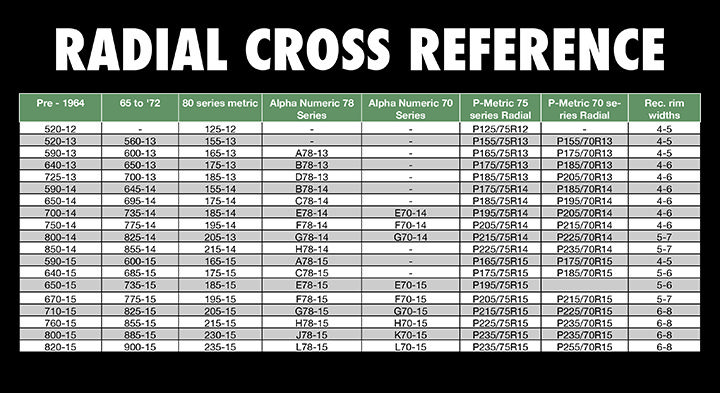 5-24 5-24 | 9.0-24 | 1226 | 313 | 570 |
| 8.25R15 | 6.6-15 | 7.0-15 | 836 | 234 | 385 |
| Radial Tubeless | |||||
| 10R22.5 | 7.50×22.5 | 6.75×22.5 | 1020 | 254 | 476 |
| 11R22.5 | 8.25×22.5 | 7.50×22.5 | 1050 | 279 | 489 |
| 12R22.5 | 9.00×22.5 | 8.25×22.5 | 1084 | 300 | 504 |
| 385/65R22.5 | 11.75×22.5 | 12.25×22.5 | 1072 | 389 | 505 |
| 275/80R22.5 | 8.25×22.5 | 7.50×22.5 | 1012 | 276 | 470 |
| 295/80R22.5 | 9. 00×22.5 00×22.5 | 8.25×22.5 | 1044 | 298 | 490 |
| 315/80R22.5 | 9.00×22.5 | 9.75×22.5 | 1076 | 312 | 499 |
| 350/80R22.5 | 11.75×22.5 | 12.25×22.5 | 1122 | 355 | 526 |
| 11/70R22.5 | 8.25×22.5 | 7.50×22.5 | 962 | 279 | 447 |
| 315/70R22.5 | 9.00×22.5 | 8.25×22.5 | 1014 | 312 | 467 |
| 425/65R22.5 | 13.00×22.5 | 14.00×22.5 | 1122 | 425 | 525 |
Tire designation example: 8.25R20 is the designation of the tire, where 8.25 is the designation of the nominal tire section width in inches, R is the letter index of the radial tire, 20 is the designation of the nominal rim diameter in inches.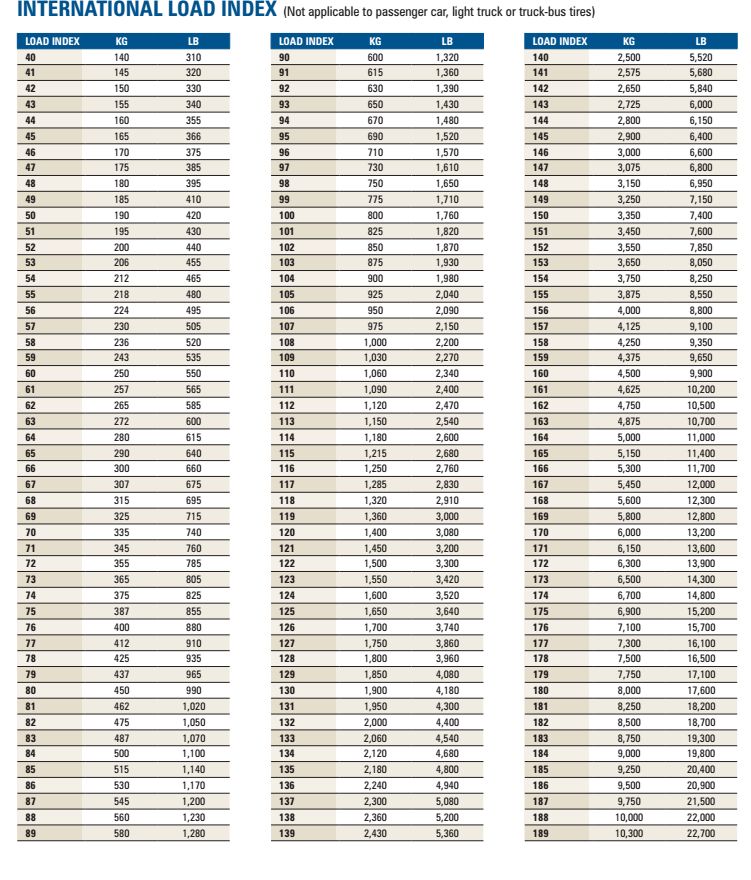
Tire profile width measured on the recommended rim. When mounted on a permitted rim, the profile width changes by 40% of the difference between the widths of the recommended and permitted rims.
| Tire size | Standard rim | Approved rim | Tread width, mm | Outer diameter, mm | Full turn distance, mm |
| 7.50R16 | 6.00 | 5.50 6.50 | 216 | 803 | 2449 |
| change to | |||||
| 225/75R17.5 | 6.75 | 7.5 | 224 | 784 | 2391 |
| 245/70R17.5 | 7.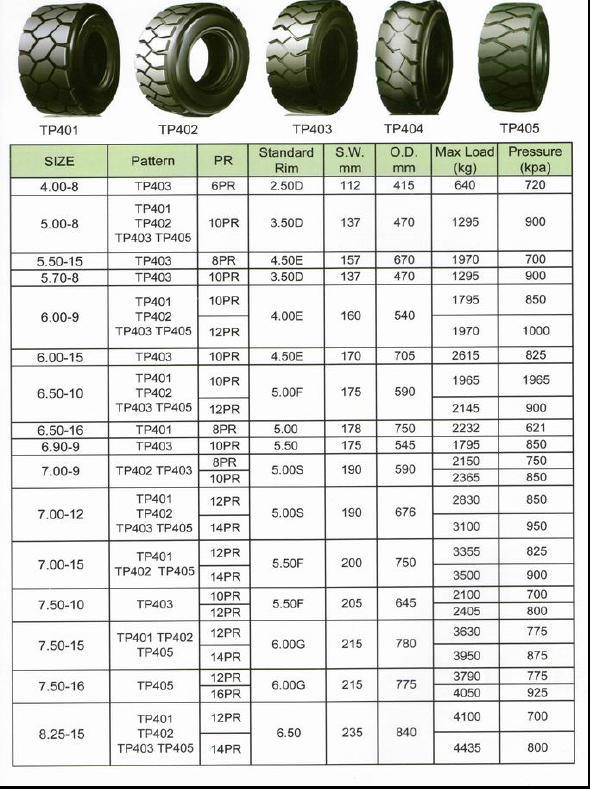 50 50 | 6.75 | 252 | 780 | 2379 |
| 8.25R16 | 6.50 | 6.00 | 230 | 850 | 2593 |
| change to | |||||
| 235/75R17.5 | 6.75 | 7.50 | 236 | 800 | 2440 |
| 245/70R19.5 | 7.50 | 6.75 | 252 | 838 | 2556 |
| 265/70R19.5 | 7.50 | 8.25 | 258 | 866 | 2641 |
| 8.25R20 | 6.50 | 7.00 | 232 | 965 | 2943 |
| change to | |||||
255/70R22.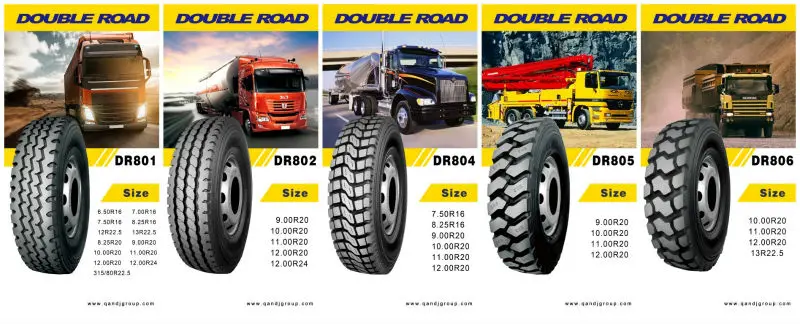 5 5 | 7.50 | 8.25 | 254 | 925 | 2821 |
| 10.00R20 | 7.50 | 8.00 | 274 | 1052 | 3209 |
| change to | |||||
| 295/80R22.5 | 9.00 | 8.25 | 298 | 1050 | 3203 |
| 11R22.5 | 8.25 | 7.50 | 277 | 1054 | 3215 |
| 11.00R20 | 8.00 | 8.50 | 288 | 1090 | 3325 |
| change to | |||||
| 12R22.5 | 9.00 | 8.25 | 300 | 1070 | 3294 |
315/80R22.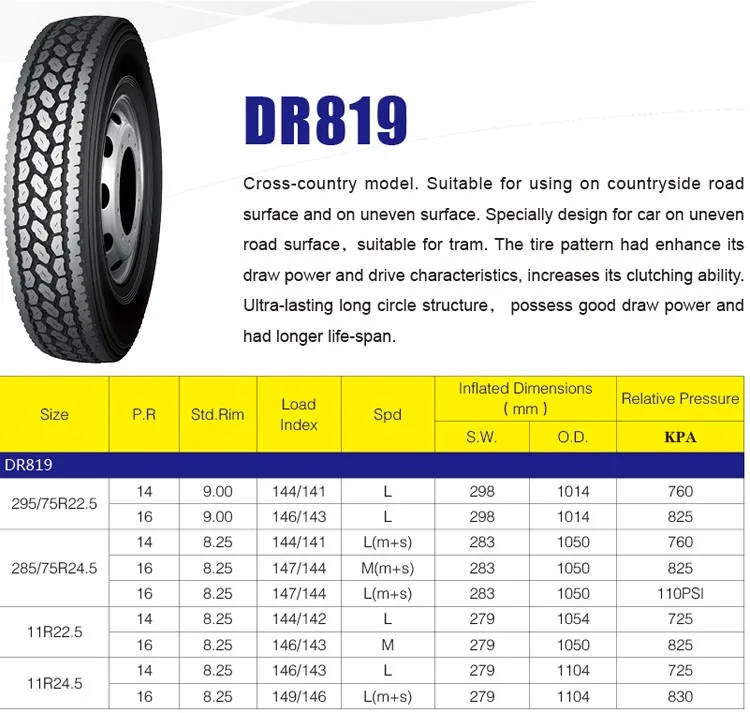 5 5 | 9.00 | 9.75 | 315 | 1080 | 3325 |
| 295/80R22.5 | 9.00 | 8.25 | 298 | 1050 | 3203 |
| 12.00R20 | 8.25 | 9.00 | 315 | 1120 | 3416 |
| change to | |||||
| 13R22.5 | 9.75 | 9.00 | 316 | 1122 | 3422 |
| 315/80R22.5 | 9.00 | 9.75 | 315 | 1080 | 3325 |
Promotion
Reviews
Andrey Car transporter driver
 5
5 | ДИАМЕТР 19.5 | |||||
|---|---|---|---|---|---|
| 19.5×6.75 | 19.5×7.50 | 19.5×8.25 | 19.5×11.75 | 19.5×13.00 | 19.5 |
| 245/70r19.5 | 265/70R19.5 | 285/70R19.5 | 385/65R19.5 | 435/50r19.5 | |
| 265/70r | 285/70R19.5 | 305/70R19.5 | 445/45R19.5 |
ДИАМЕТР 22. 5 5 | |||||||||||||||
|---|---|---|---|---|---|---|---|---|---|---|---|---|---|---|---|
| 22.5×6.75 | 22.5×7.50 | 22.5×8.25 | 22.5 5 | 365/70r22.5 | 415/45R22.5 | 415/45R22.5 | |||||||||
| 9R22.5 | 11R22.5 | 12R22.5 | 13R22.5 | 2229375/90Rr 5 | 425/65R22.5 | 425/65R22.5 | |||||||||
| 10r22.5 | 255/70r22.5 | 255/70r22.5 | 285/60r22.5 | 385/55r22.5 | 445/75r22 | ||||||||||
| 255/70r22.5 | 265/60r22.5 | 265/60r22.5 | 295/60r22.5 | 385/65r22.5 | 445/65R22.5 | 275/70R22.5 | 275/70R22.5 | 295/80R22.5 | 445/75r22.5 | ||||||
| 275/80r22.5 | 275/80r22.5 | 305/60r22.5 | |||||||||||||
305/70R22. 5 5 | |||||||||||||||
| 295/80R22.5 | 315/60R22.5 | ||||||||||||||
| 305/70R22 .5 | 315/70R22.5 | ||||||||||||||
| 315/75R22.5 | |||||||||||||||
| 315/80R22.5 |
Chamber tires (TT)
007 | 7.5-20 | 8.0-20 | 8.5-20 | |
| 8.25R20 | 11.00R20 | 11.00R20 | ||
10. |